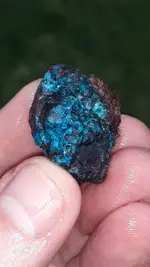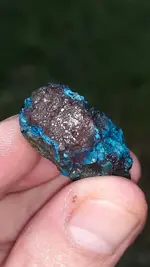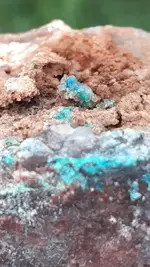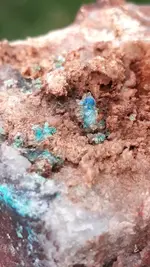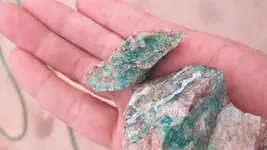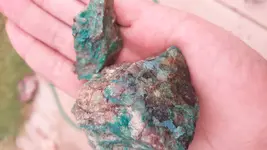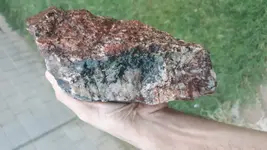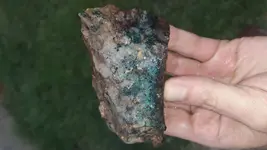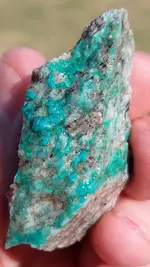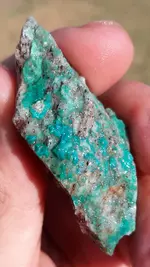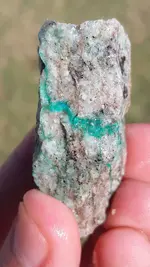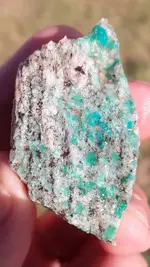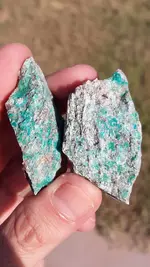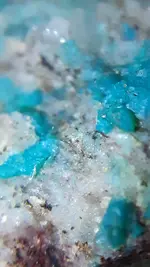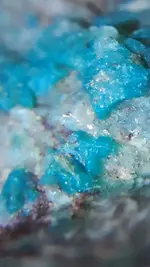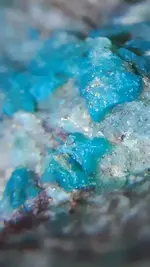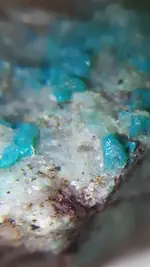Turquoise is a hydrated phosphate of copper and
aluminum. There is no silica in turquoise but it is sometimes found in association with quartz.
There are a lot of green/blue copper minerals. Real turquoise is rare but a lot of green/blue silicates and carbonates get passed off as turquoise.
The copper minerals, with the exception of well crystallized
Azurite,
Malachite and
native copper, are virtually impossible to distinguish by sight alone. Being a secondary mineral Chrysocolla doesn't have any crystal structure of it's own but it does incorporate silica as a minor part of it's chemical makeup.
The appearance and color of your rock (mineral?) very closely resembles natural
Chrysocolla. It doesn't look like any
gem silica I've handled.
The copper group has a lot of different minerals often found in close association. Color is often used unsuccessfully to identify minerals in this group but hardness is a much better indicator. For example Turquoise and Gem Silica both have hardness around 5 - 6.5. They are borderline semiprecious stones - just barely hard enough to be worn in jewelry with care. Chrysocolla, Azurite, Malachite and the vast majority of the other copper colored minerals have hardness of 2 - 3.5 and don't wear well in jewelry.
I suggest you add a good set of hardness picks to your kit if you are going to be collecting rocks and minerals in the copper rich areas.
Here's my preferred set which includes Mohs 2-9 hardness picks, multiple streak plates, magnet and a table of 300 mineral's hardness in a compact set. Good for the field or lab. There are many more hardness picks to choose from but buyer beware quality and hardness ranges vary considerably.
